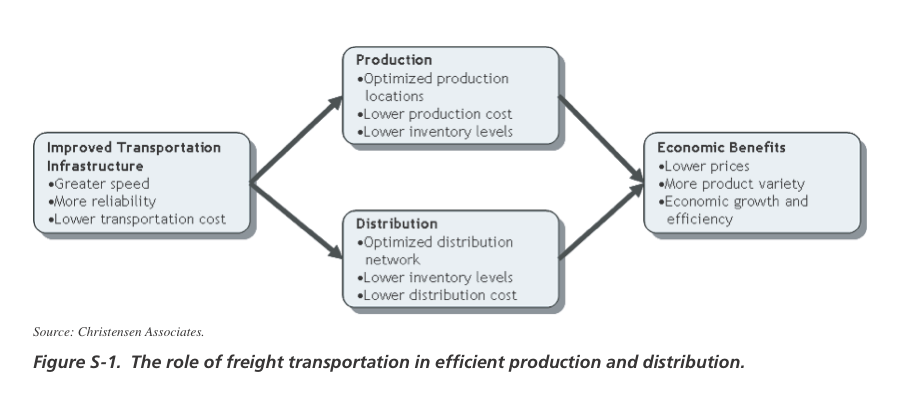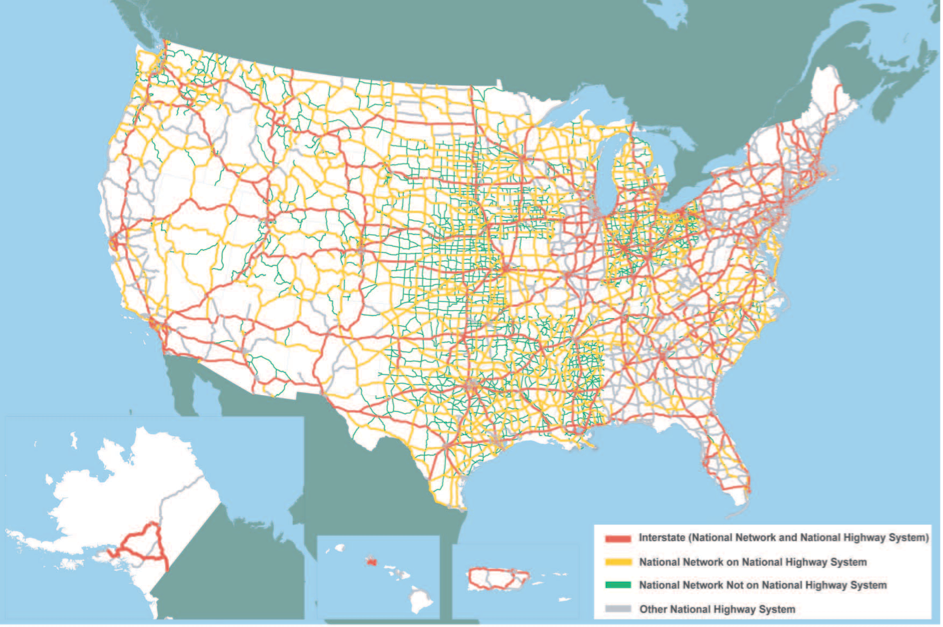NATIONAL COOPERATIVE FREIGHT RESEARCH PROGRAM
Summary
NCFRP Report 16 is the final report of NCFRP Project 24, “Preserving and Protecting Freight Infrastructure and Routes” (FY 2009). The purpose of this project was to provide practical tools to preserve and protect freight facilities and corridors. This report
• Presents information about freight transportation and its importance to everyday life;
• Illustrates types of conflicts between freight and other land uses, and their consequences; and
• Provides tools and resources to preserve facilities and corridors, including prevention or resolution of these conflicts.
The target audience for this study consists of decision makers involved in freight facility operations, freight transportation planning, and land-use decisions. This includes state departments of commerce and transportation, metropolitan planning organizations (MPOs), local officials and their planning offices, legislators and their staffs, freight facility developers, freight operators, and real estate concerns.
One innovative contribution of the NCFRP Project 24 was the development of a website, entitled EnvisionFreight, found at http://www.EnvisionFreight.com, and an associated guidebook. The “beta” version of the website and guidebook were previewed at the NCFRP Project 24 workshop, held in January 2011. For many of the topics covered in this report, more detailed materials are available on the website. References to these website materials are provided in this report where relevant.
The Importance of Freight Transportation
Freight is an essential and ubiquitous part of our economy. Transportation services are needed to deliver raw and intermediate materials to producers and to deliver final products to retailers and final customers. At its core, freight and its transportation are an integral part of supply chain management (SCM). SCM involves decisions about what to produce, what inputs to use, how to configure a distribution network, how much inventory to maintain, and how to transport inputs and products. Logistics management refers to the part of SCM that involves decisions about how and when to get raw materials, intermediate goods, and finished goods from their respective origins to their destinations. Included in logistics management are interrelated choices of modes of transportation (rail, truck, water, air), shipment characteristics (less-than-load vs. full load, etc.), warehousing, and levels of inventories to maintain.
Freight volumes and the transportation of those volumes are driven by consumption. Moreover, a key determinant of consumption growth is population growth, which makes growth in freight volumes and the need to transport these increasing volumes a virtual certainty. According to the most recent information from the Commodity Flow Survey (CFS), on average, 42 tons of freight worth $39,000 was delivered to every person in the United States in 2007. When considering the distance involved in transporting this freight, an average of 11,000 ton-miles was delivered to every person in the country. To gain perspective on the amount of transportation involved, this is equivalent to carrying one ton of freight for every man, woman, and child in the United States 11,000 miles, or each of the 42 tons of freight for every person over 260 miles.
Many factors affect producers’ logistical choices and supply chain configurations. These include the relative costs of transportation modes, the comparative speed and reliability of transportation modes, the ease of switching between modes, the costs of holding inventory, and the amount of logistical costs as a share of total production, distribution, and marketing costs. Improvements in information technology also can improve the utilization of transportation services, making them more attractive relative to the use of other logistics inputs. For example, with just-in-time inventory management, fast and reliable transportation has been combined with information technology to reduce the need for maintaining large inventories.
Figure S-1 illustrates the vital link provided by freight transportation in supply chains and economic performance. Improvements in freight transportation efficiency, reliability, and level of service have numerous economic benefits for production efficiency, optimization of distribution networks, and product choice, and—ultimately —the cost to consumers. As improvements are made in transportation infrastructure, producers are able to centralize their production operations and site their operations in lower-cost areas, because the uncertainties concerning the movement of goods to customers are reduced. Transportation infrastructure improvements also allow a more efficient design of the distribution network. The cost of inventories can be reduced as the needed hedge against transportation uncertainties is reduced. This also allows firms to change their inventories quickly in response to customers’ changing needs or desires. This ultimately leads to lower cost and greater product variety for customers.
Read full report (PDF) here: Preserving and Protecting Freight Infrastructure and Routes
About the National Cooperative Freight Research Program
www.trb.org/NCFRP
“The National Cooperative Freight Research Program (NCFRP) conducts research and disseminates timely findings that will inform investment and operations decisions affecting the performance of the freight transportation system.”
Tags: EnvisionFreight, Freight, National Cooperative Freight Research Program, optimization, supply chain management








 RSS Feed
RSS Feed